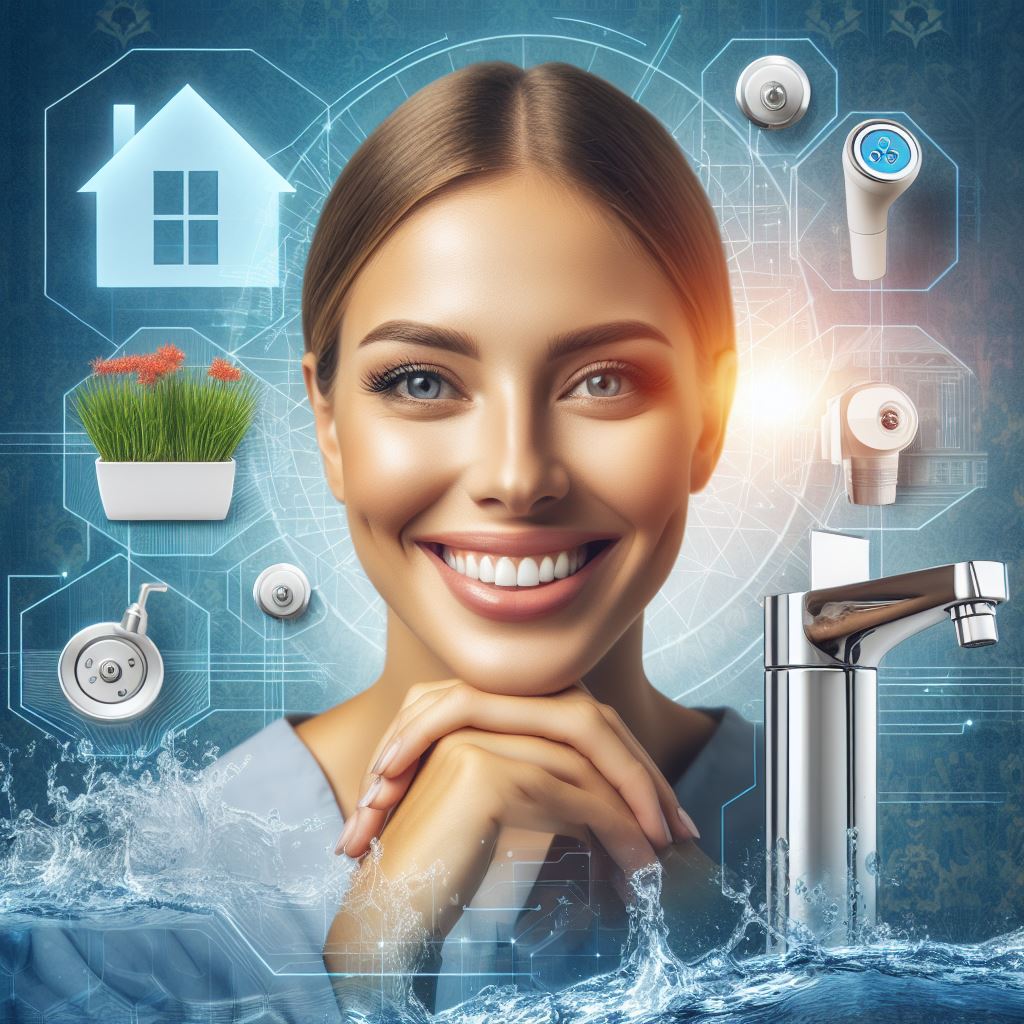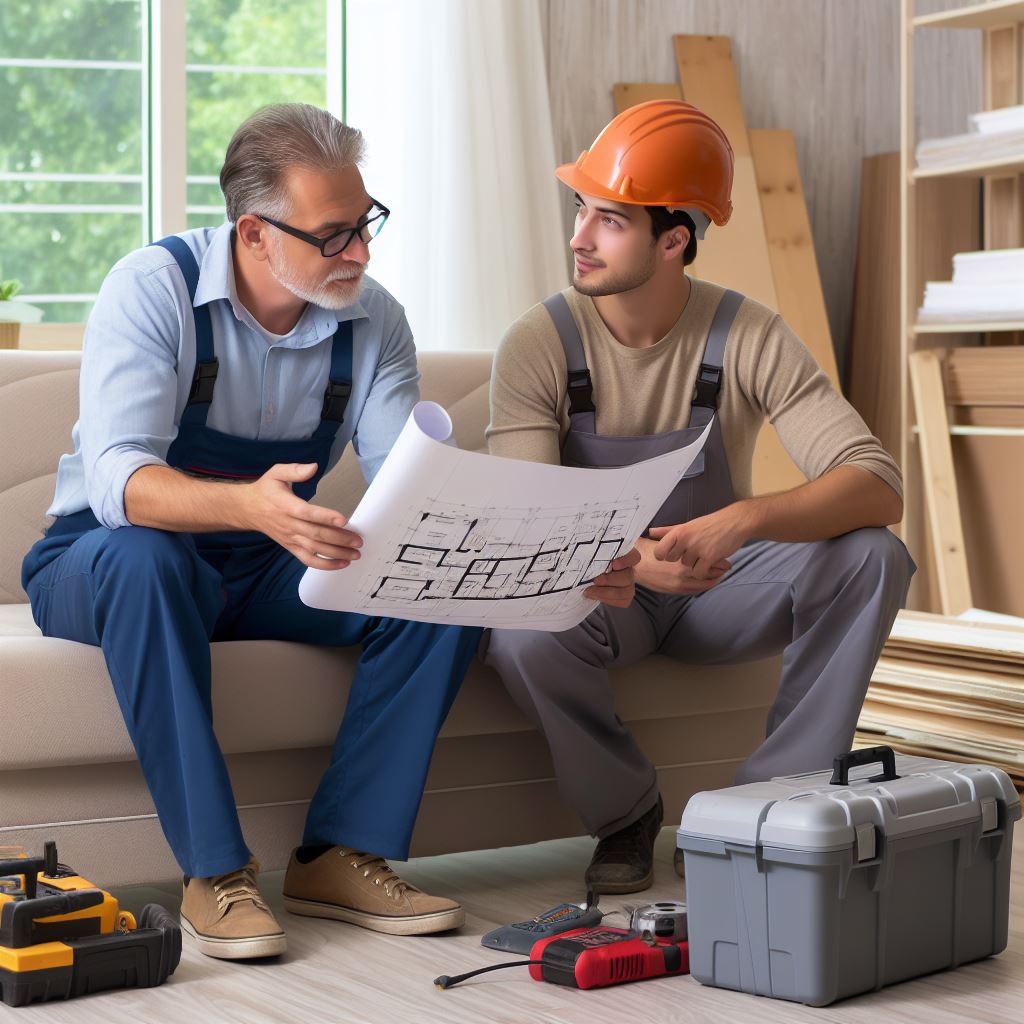Introduction
Water conservation at home is of utmost importance in today’s world where freshwater resources are depleting rapidly.
Technology plays a pivotal role in aiding water conservation efforts.
With the global population increasing at an unprecedented rate, water scarcity is becoming a pressing issue in many parts of the world.
It is essential for individuals to understand the significance of conserving water, especially at home.
By adopting water-saving technologies, homeowners can significantly reduce their water consumption and contribute towards sustainability.
Various innovative devices and systems are available today that help monitor and control water usage efficiently.
Smart meters provide real-time data on water usage, enabling homeowners to track their consumption and identify areas where they can make changes to save water.
Water-efficient appliances like low-flow faucets, showerheads, and toilets help reduce water wastage without compromising on performance.
Rainwater harvesting systems collect and store rainwater, which can be used for non-potable purposes such as watering plants, washing cars, or flushing toilets, thereby reducing reliance on freshwater sources.
Smart irrigation systems utilize weather data and soil moisture sensors to optimize watering schedules, ensuring plants receive the right amount of water without any excess.
Leak detection devices can promptly identify leaks in pipes or faucets, preventing water waste and costly repairs.
Additionally, water management apps provide tips, reminders, and personalized recommendations to encourage mindful water usage.
In essence, water conservation at home is crucial for both environmental sustainability and financial savings.
Integrating technology into everyday practices can help individuals play a more active role in preserving this valuable resource.
Smart Water Monitoring Systems
Definition and features of smart water monitoring systems
Smart water monitoring systems are advanced technologies that track and analyze water usage in homes.
These systems are equipped with various features that allow homeowners to monitor and control their water consumption.
One of the key features of smart water monitoring systems is real-time data tracking.
Homeowners can easily access information about their water usage through a smartphone or computer.
By knowing how much water they are using, homeowners can make informed decisions to conserve water.
Smart water monitoring systems also provide alerts and notifications for any unusual water usage patterns.
This can help homeowners detect leaks or excessive water usage and take immediate action.
Benefits of using smart water monitoring systems at home
Using a smart water monitoring system at home offers several benefits:
- Water Conservation: Smart water monitoring systems promote water-saving habits by raising awareness of water usage.
- Cost Savings: By monitoring water usage, homeowners can identify areas of excessive consumption and reduce their water bills.
- Environmental Impact: Conserving water helps in reducing the strain on water resources and protects the environment.
- Leak Detection: Smart water monitoring systems can quickly detect leaks and prevent water damage and expensive repairs.
- Behavioral Change: By tracking water usage and providing feedback, these systems encourage behavior changes to conserve water.
Examples of popular smart water monitoring systems
There are several popular smart water monitoring systems available:
- Flume: Flume is a smart water monitor that provides real-time water monitoring and leak detection.
- Phyn Plus: Phyn Plus is an intelligent water monitoring system that can identify plumbing issues and conserve water.
- StreamLabs Control: StreamLabs Control is a smart water monitor that offers real-time water usage data and alerts for leaks.
- AquaTrip: AquaTrip is a whole-house water leak detection system that shuts off the water supply in case of a leak.
- Buoy: Buoy is a smart water monitoring device that tracks water usage, detects leaks, and provides data insights.
Cost and installation considerations
When considering a smart water monitoring system, there are cost and installation considerations to keep in mind.
The cost of a smart water monitoring system can vary depending on the features and brand.
Installation can be done by a professional plumber or as a DIY project, depending on the complexity of the system.
It’s essential to evaluate the compatibility of the system with existing plumbing infrastructure and smart home technology.
In essence, smart water monitoring systems are beneficial tools for conserving water at home.
These systems provide real-time data, detect leaks, and encourage behavior changes to promote sustainable water usage.
Investing in a smart water monitoring system can lead to cost savings, environmental impact, and protection against water damage.
Read: Solar Tech in Home Renovations
Smart Irrigation Controllers
Smart irrigation controllers are innovative technologies that help homeowners efficiently manage their outdoor water usage.
These controllers use advanced features and functionalities to ensure water conservation without compromising the health of plants and landscapes.
Overview of Smart Irrigation Controllers
Smart irrigation controllers are devices that automate and optimize the process of watering outdoor landscapes based on various factors such as weather conditions, plant types, and soil moisture levels.
These controllers replace traditional manual irrigation systems and offer a more efficient and precise way of delivering water to plants.
By using real-time data and advanced algorithms, smart irrigation controllers calculate the right amount of water needed and distribute it accordingly.
This technology eliminates over-watering and minimizes water waste, leading to significant water conservation.
Advantages of using Smart Irrigation Controllers for Outdoor Water Conservation
- Water Savings: Smart irrigation controllers can reduce outdoor water usage by up to 50% by delivering water only when needed.
- Cost Savings: By using water more efficiently, homeowners can save money on their water bills in the long run.
- Improved Plant Health: Smart irrigation controllers ensure that plants receive the right amount of water, preventing under or over-watering, which can lead to healthier and more vibrant landscapes.
- Time-saving: These controllers automate the irrigation process, saving homeowners valuable time spent manually watering their landscapes.
- Environmentally Friendly: By conserving water, smart irrigation controllers help protect local water sources and reduce strain on the environment.
Features and Functionality of Smart Irrigation Controllers
Smart irrigation controllers come equipped with a range of features and functionalities to optimize water conservation:
- Weather-based Irrigation: These controllers use weather data to adjust watering schedules based on real-time conditions, such as rain or temperature changes.
- Soil Moisture Monitoring: Some controllers monitor soil moisture levels to deliver water only when the soil is dry, preventing over-watering.
- Customized Irrigation Zones: Smart controllers allow homeowners to create customized irrigation zones based on plant types, sun exposure, or soil type, ensuring each area receives the appropriate amount of water.
- Remote Access: Many controllers offer smartphone apps or web-based interfaces, allowing homeowners to monitor and control their irrigation systems remotely.
- Water Usage Reports: These controllers provide detailed water usage reports, allowing homeowners to track their usage patterns and make further adjustments for increased efficiency.
Case Studies of Successful Implementation
Many homeowners and organizations have successfully implemented smart irrigation controllers to achieve significant water conservation:
- In a case study conducted by XYZ Landscaping, the use of smart irrigation controllers reduced outdoor water consumption by 40% in a residential community.
- The City of ABC implemented smart irrigation controllers in public parks, resulting in a 50% decrease in water usage and substantial cost savings.
- Homeowner Jane Smith installed a smart irrigation controller in her backyard and saw a noticeable improvement in her plants’ health while reducing her water bills by 30%.
These case studies highlight the effectiveness of smart irrigation controllers in conserving water and promoting sustainable outdoor water usage practices.
In fact, smart irrigation controllers are valuable tools for homeowners seeking to conserve water in their outdoor spaces.
With their advanced features and functionalities, these controllers ensure precise water delivery while minimizing waste, saving money, and protecting the environment.
Read: Building Materials: The Tech Edge
Low-Flow Fixtures and Devices
The Low-flow fixtures and devices are water-saving solutions implemented in households to conserve water.
Low-flow fixtures and devices
Low-flow fixtures and devices are designed to reduce water usage without compromising functionality.
They restrict water flow by using aerators, restrictors, or other innovative technologies.
These fixtures and devices provide a sustainable water-saving alternative for daily household activities.
Benefits of using low-flow fixtures and devices in the home
- Significantly reduce water consumption and utility bills.
- Conserve valuable water resources, especially in regions experiencing water scarcity or drought.
- Decrease the energy required for water heating, resulting in lower energy bills.
- Environmentally friendly as it reduces the burden on water treatment and distribution systems.
- Improves water pressure in the home and extends the lifespan of plumbing systems.
Examples of low-flow fixtures and devices for faucets, showers, and toilets
Many options are available for each fixture, catering to different preferences and budgets:
Faucets
- Low-flow aerators: Mix air with water, providing a steady stream while reducing water usage.
- Sensor-activated faucets: Only dispense water when hands are detected, minimizing wastage.
- Water-saving faucet valves: Allows adjustable flow rates to control water volume.
Showers
- Low-flow showerheads: Reduce water flow while maintaining a satisfying shower experience.
- Air-infused showerheads: Mix air with water, creating a voluminous spray while using less water.
- Water-saving shower timers: Alerts users when they have exceeded a set duration, encouraging shorter showers.
Toilets
- Dual-flush toilets: Offer separate flush options for liquid waste and solid waste, optimizing water usage.
- Low-flow toilets: Use gravity or pressure-assist technologies to use less water per flush.
- Flush converters: Retrofit existing toilets to become low-flow by replacing the flush valve.
Tips for selecting and installing low-flow fixtures and devices
- Consider water efficiency ratings such as WaterSense or ENERGY STAR labels for guidance.
- Check local building codes to ensure compliance and eligibility for water-saving incentives.
- Consult professionals or research installation guides for proper setup and compatibility with existing plumbing.
- Regularly maintain and clean fixtures to ensure optimal performance and longevity.
- Encourage household members to practice responsible water usage habits to maximize savings.
By incorporating low-flow fixtures and devices in our homes, we can actively contribute to water conservation and create a more sustainable future.
These simple changes not only benefit the environment but also reduce utility bills while maintaining convenience and functionality.
Read: Eco-Friendly Tech in Modern Homes

Water Leak Detection and Prevention Systems
Water leaks can cause significant damage to homes and lead to unnecessary wastage of water.
Therefore, it is essential to detect and prevent water leaks to conserve water and protect our homes.
Importance of detecting and preventing water leaks
- Water leaks can result in water damage, leading to costly repairs or even structural issues.
- Conserving water by preventing leaks helps in the global effort to address water scarcity.
- Early detection of leaks can save homeowners money on their water bills.
How water leak detection and prevention systems work
Water leak detection and prevention systems utilize various technologies to identify leaks and automatically shut off the water supply.
- Sensors: These systems use sensors placed in areas prone to leaks, such as under sinks or near appliances.
- Flow meters: Flow meters measure water flow and can detect abnormalities or sudden increases in usage.
- Smart algorithms: Advanced systems analyze water usage patterns to detect irregularities and identify potential leaks.
Types of water leak detection and prevention systems available
- Whole-house systems: These systems monitor the entire water supply and can offer comprehensive leak detection.
- Individual appliance systems: Some systems focus on specific appliances, such as washing machines or dishwashers.
- Smart home integration: These systems can be connected to smart home devices, providing real-time notifications and control.
Recommendations for incorporating water leak detection and prevention systems in the home
- Research different systems based on your specific needs and budget.
- Consult with a professional plumber or water conservation expert for advice and installation.
- Consider the size and layout of your home to determine the number of sensors or meters required.
- Regularly maintain and test the system to ensure its effectiveness.
- Monitor your water usage to identify any unusual patterns that may indicate a leak.
By incorporating water leak detection and prevention systems in our homes, we can minimize water waste, protect our properties, and contribute to a more sustainable future.
Read: Tech Districts: Real Estate Gold?
Water Usage Monitoring Apps and Devices
Water sources are becoming increasingly scarce, making it essential for individuals to be mindful of their water consumption.
Fortunately, there are now various apps and devices available that can help monitor and track water usage at home.
Introduction to Water Usage Monitoring Apps and Devices
Water usage monitoring apps and devices are tools designed to keep homeowners informed about their daily water consumption.
They provide real-time data and insights, allowing users to make more conscious decisions.
Benefits of Tracking Water Consumption
- Promoting Conscious Water Use: Monitoring consumption encourages individuals to be more mindful of their water usage habits.
- Detecting Leaks and Wastage: Tracking allows for early detection of leaks or wasteful practices, helping conserve water and prevent unnecessary expenses.
- Cost Savings: By understanding their water consumption patterns, users can adjust their habits and reduce their monthly water bills.
- Environmental Impact: Conserving water contributes to a healthier environment by minimizing the strain on water resources.
Examples of Popular Water Usage Monitoring Apps and Devices
- WaterSense: This app, developed by the Environmental Protection Agency (EPA), provides users with insights into their water use and offers personalized tips for conservation.
- Hydrao: Hydrao is an innovative showerhead equipped with LED lights that change color based on the duration of showering, helping users reduce their water usage.
- Flume: Flume is a smart water meter that can be easily installed on existing water systems, providing real-time water usage information through a mobile app.
- WaterMinder: This app allows users to set water intake goals and track their daily consumption, encouraging individuals to stay adequately hydrated while being water-conscious.
Tips for Using Water Usage Monitoring Apps and Devices Effectively
- Set Consumption Goals: Establish water usage targets to motivate yourself and benchmark your progress.
- Regularly Check the App or Device: Keep an eye on the collected data to identify any unusual spikes or potential issues.
- Act on the Insights: Use the information provided by the monitoring tools to make informed decisions on water-saving practices.
- Share the Information: Involve family members and housemates in monitoring water usage to collectively work towards conservation goals.
- Stay Educated: Continuously research and learn about sustainable water practices to optimize your conservation efforts.
- Combine Monitoring with Efficiency Upgrades: Pair your monitoring devices with water-efficient appliances and fixtures for comprehensive water conservation.
Water conservation is a collective responsibility, and using water usage monitoring apps and devices can empower individuals to make a significant impact.
By understanding and tracking our water consumption, we can all contribute to preserving this precious resource for future generations.
Conclusion
Water conservation at home is of utmost importance for ensuring a sustainable future.
Technology plays a crucial role in achieving water conservation goals by providing innovative solutions.
From smart faucets to irrigation systems, technology offers various ways to save water and reduce wastage.
I encourage all readers to explore and adopt these tech solutions for water conservation at home.
By using technology, we can contribute to saving water resources and protecting the environment.
Let us all make a conscious effort to conserve water and create a better world for future generations.




